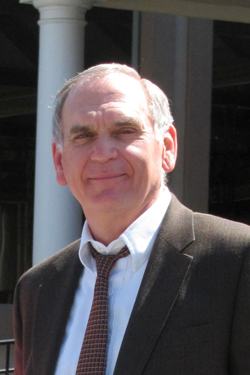 2014 National Executive Board Election Candidate for Vice President
2014 National Executive Board Election Candidate for Vice President
George Amann
Retired physics teacher Hyde Park Central Schools
Hyde Park, NY 12538
amannga@earthlink.net
Education
- MA from Hofstra University in Education
- BS in Physics Education from Long Island University – graduated Summa Cum Laude
Professional Experience
- High School physics teacher North Babylon High School, North Babylon, NY, 1972-1977
- High School physics at Hyde Park Central Schools, Hyde Park, NY, 1977-2002.
- Adjunct Lecturer in physics at Dutchess Community College, Poughkeepsie, NY, 1984-2002
- Consultant to the NSF sponsored Active Physics Program revision as field test coordinator and general consultant 2003 - 2009
- AAPT/PTRA co-director, 2002 - 2011
Honors
- Association of Parents and Friends, Salutatorian Award – CW Post College
- Science Teachers Association NY State (STANYS) "Outstanding Science Teacher" for the Southeast Section - 1982
- Tandy Technology Award - 1991
- NY finalist Presidential Award, 1993 and 1996
- Recipient of the New York State Section of AAPT Service Award -1999
- Recipient of the AAPT Distinguished Service Award - 2005
- STANYS Director at Large for Physics – 1994 – 2000
- Co-recipient of the 2010 APS Excellence in Physics Education Award
Memberships
- AAPT
- NY Section AAPT
- Science Teachers Association NY
- AAPT/PTRA
AAPT Activities
- NYSS/AAPT - member of Executive Board, 1990-2002, Vice President, 1993-96, President, 1996–98, Secretary/Treasurer 1999-2002
- AAPT - member of Physics in the High Schools Committee (1992 -95), member of Committee on Science Education for the General Public (1996-98)
- AAPT/PTRA – 1992–present
- New York City Coordinator for Urban PTRA 1997-2002
- Co-director Rural PTRA 2003–2011
Commentary
The ubiquitous use of iOS and other smart phones based technology has given rise to a cohort of students who are technology savvy and often do not respond well to traditional teaching. The focus on new standards (NGSS), has also led to a rapid increase in physics enrollment at the High School level resulting in a shortage of qualified physics teachers. In some parts of the country many students have teachers who are pressed into teaching physics with insufficient background and limited experience in how to use this technology to inspire this new generation. AAPT at present has programs such as PhysTEC to train pre-service teachers, and PTRA to train in-service teachers which emphasize modern, effective, research based methods for teaching physics. In conjunction with programs such as modeling, the physics community is well positioned to meet this critical need. Through my work with the PTRA program I have witnessed firsthand the powerful effect of collaborations between pre-college teachers and the two- and four-year college and university faculty in developing workshops to meet these goals. The full support and expansion of these programs should be among AAPT’s highest priorities. In addition, AAPT must develop methods to provide exposure to the larger educational community that highlight the success of these programs and seek out sources of funding that will provide for their continuation.

